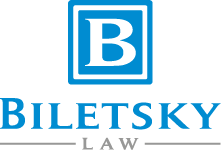DMCA Takedown Notice
 In 1998 the United States enacted the Digital Millenium Copyright Act (DMCA). The DMCA updated various parts of the then current copyright laws. One such provision that was updated was the Online Copyright Infringement Liability Limitation Act (OCILLA). OCILLA provides a conditional safe harbor for Online Service Providers and similar “middlemen of the internet” (think content hosting sites such as Youtube, Vimeo, etc.).
In 1998 the United States enacted the Digital Millenium Copyright Act (DMCA). The DMCA updated various parts of the then current copyright laws. One such provision that was updated was the Online Copyright Infringement Liability Limitation Act (OCILLA). OCILLA provides a conditional safe harbor for Online Service Providers and similar “middlemen of the internet” (think content hosting sites such as Youtube, Vimeo, etc.).
While there are many different parts of the OCILLA which provide certain protections from liability, this article will focus in particular on the Takedown Provisions. The Takedown Provisions require that in order for an Online Service Provider to be able to take advantage of the safe harbor provisions, they must comply with certain notices and in particular, any Takedown Notices. These Takedown Notices act as an easy way for content owners to be able to protect their intellectual property by notifying the service provider that their intellectual property has been infringed upon.
Once the content owner has made the service provider aware of the infringment, it is now up to the service provider to take action to stop the infringment. When a service provider complies with the Takedown Notice and removes the content, the service provider is deemed to have fulfilled their obligations under the law and they can then take advantage of the safe harbor provisions which protect them from being liable for the infringement.
If the service provider is made aware of the infringement and does not take action to prevent it, if such infingement is occuring, then the service provider may not be in compliance with the law and therefore may not be able to take advantage of the safe harbor provisions.
So how do you file one of these Takedown Notices? It is advised that if you do find out that your intellectual property is being infringed that you contact an intellectual property or entertainment lawyer immediately. However, to explain what the process is:
First, it is important to determine whether the content provider provides a way for content owners to send a Takedown Notice. Usually, this will be found in the very bottom of a website and will be under the “Terms of Use” (or similar worded page) or there may be a “DMCA” link. Within the terms or in the DMCA page, there will be a list of statements that must be sent to the service provider in order for hte Takedown Notice to be in compliance with the law:
Worded in one way or another, the following is required in order for the Takedown Notice to be effective:
- (i) A physical or electronic signature of a person authorized to act on behalf of the owner of an exclusive right that is allegedly infringed.
- (ii) Identification of the copyrighted work claimed to have been infringed, or, if multiple copyrighted works at a single online site are covered by a single notification, a representative list of such works at that site.
- (iii) Identification of the material that is claimed to be infringing or to be the subject of infringing activity and that is to be removed or access to which is to be disabled, and information reasonably sufficient to permit the service provider to locate the material.
- (iv) Information reasonably sufficient to permit the service provider to contact the complaining party, such as an address, telephone number, and, if available, an electronic mail address at which the complaining party may be contacted.
- (v) A statement that the complaining party has a good faith belief that use of the material in the manner complained of is not authorized by the copyright owner, its agent, or the law.
- (vi) A statement that the information in the notification is accurate, and under penalty of perjury, that the complaining party is authorized to act on behalf of the owner of an exclusive right that is allegedly infringed.
Once a Takedown Notice which includes all of the above is sent to the servie provider, it is up to them whether or not to comply. Many of the larger service providers will have certain procedures in place to determine whether there actually has been infringement and whether they should remove the content.
While what goes into the Takedown Notice is pretty much the same for every service provider, each service provider has their own protocol for dealing with the notices. You may or may not receive any kind of confirmation or response. You may eventually notice that the infringing content has been removed, or not.
If you have sent a service provider a DMCA Takedown Notice but the infringing content has not been removed, it is important that you contact an attorney to take the next steps necessary to protect your intellectual property.
Has your content been posted without your permission? Contact Biletsky Law to ensure that your intellectual property rights are protected.









